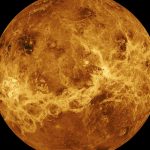Key Takeaways:
- Super-Earths orbiting closely to their stars have had their atmospheres stripped away.
- These “bare” planets provide a unique opportunity to study the evolution of atmospheres on hot rocky planets.
- The planets, TOI-1634b and TOI-1685b, are confirmed to be rocky super-Earths with ultra-short orbital periods.
- The lack of a primordial hydrogen-helium atmosphere suggests the influence of the host stars’ flare activity.
- The possibility of a secondary atmosphere caused by volcanic outgassing exists, similar to Earth billions of years ago.
The solar dynamics of a system play a pivotal role in determining habitability, as demonstrated by the planets in our Solar System. Earth, with its protective magnetic field, has sustained a stable atmosphere for billions of years, fostering the evolution of life. However, other rocky planets in our solar system present a different picture due to their interactions with the Sun.
Recently, astronomers have been exploring this process in extrasolar planets. A team led by the National Astronomical Observatory of Japan (NAOJ) conducted follow-up observations on two Super-Earths orbiting closely to their stars. These planets, devoid of thick primordial atmospheres, offer an opportunity to study atmospheric evolution on hot rocky planets.

The findings were published in The Astrophysical Journal by Dr. Teruyuki Hirano of NAOJ and The Graduate University for Advanced Studies (SOKENDAI) in Tokyo, Japan, along with researchers from various institutes worldwide.
The team focused on two planets identified by NASA’s Transitting Exoplanet Survey Spacecraft (TESS) – TOI-1634b and TOI-1685b. These Super-Earth planets orbit M-type (red dwarf) stars located about 114 and 122 light-years away in the constellation Perseus.
Using the InfraRed Doppler (IRD) spectrograph mounted on the Subaru Telescope, the team confirmed that these candidates are rocky super-Earths with ultra-short orbital periods. TOI-1634b is one of the largest and most massive ultra-short-period rocky exoplanets confirmed to date.
The spectra obtained provided insight into these planets’ internal and atmospheric structures. They were found to be “bare,” lacking a primordial hydrogen-helium atmosphere similar to what Earth had billions of years ago. This is likely due to their proximity to their host stars, which are prone to flare activity.

The “bare” nature of these rocky planets raises the possibility of a secondary atmosphere caused by volcanic outgassing, similar to what occurred on Earth approximately 2.5 billion years ago.
These planets present a significant opportunity for studying how atmospheres evolve on rocky planets, especially those orbiting red dwarf stars. Their “bare” status allows astronomers to test theories regarding rocky planets that orbit closely to red dwarf stars, known for being variable and prone to flare-ups.
Rocky planets that orbit within a red dwarf’s habitable zone are likely to be tidally locked (with one side constantly facing towards the star), leading astronomers to wonder if they can maintain their atmospheres for long. Red dwarfs make up an estimated 75% of stars in the Milky Way, and many rocky planets have been found in red dwarf systems (including Proxima b, which orbits the closest star to our own).
Studying these exoplanets could have significant implications in the search for extraterrestrial life and help astronomers learn more about how this particular class of planet (Super-Earths) form and evolve. “Our project to intensively follow-up planetary candidates identified by TESS with the Subaru Telescope is still in progress, and many unusual planets will be confirmed in the next few years,” said Dr. Hirano.


